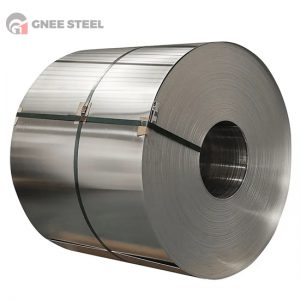Silicon Steel

Lower Core Losses of Non-Grain Oriented silicon steel
Non-grain oriented (NGO) silicon steel exhibits lower core losses compared to conventional steel and other magnetic materials, making it highly efficient for use in electrical applications. prod...
DESCRIPTION
Non-grain oriented (NGO) silicon steel exhibits lower core losses compared to conventional steel and other magnetic materials, making it highly efficient for use in electrical applications.
product description
|
Thickness
|
0.5-3mm or as requested
|
|
Standard
|
JIS/ASTM/EN/GB and so on
|
|
Width
|
Default value 1250mm or custom value
|
|
Certificate
|
ISO, CE
|
|
Tolerance
|
±1%
|
|
Processing Service
|
Punching, Decoiling
|
|
Delivery Time
|
8-14 days
|
The high silicon content (typically around 2% to 3.5%) in NGO silicon steel significantly reduces the hysteresis losses. Silicon has a higher electrical resistivity than iron, which helps minimize the energy dissipation due to magnetic domain reorientation during each magnetization cycle.Unlike grain-oriented silicon steel, which has a specific crystallographic grain orientation for improved magnetic permeability in a specific direction, NGO silicon steel has a random grain structure. This random grain orientation results in reduced magnetic losses and makes NGO silicon steel more suitable for applications involving multidirectional magnetic flux.NGO silicon steel is typically produced in the form of thin laminations or sheets that are insulated from one another. This lamination reduces eddy current losses, as the current paths are interrupted by the insulating layers between the laminations.







